| Ministry overview | |
|---|---|
| Formed | 1999 |
| Jurisdiction | Government of Rivers State |
| Headquarters | 14th Floor, Wing B, State Secretariat Port Harcourt, Rivers State, Nigeria 4°46′31″N7°0′53″E / 4.77528°N 7.01472°E Coordinates: 4°46′31″N7°0′53″E / 4.77528°N 7.01472°E |
| Ministry executive |
|
The Rivers State Ministry of Power is a government ministry of Rivers State, Nigeria created in July 1999 to serve as the policy-formulating and implementing body for the state's electrical energy and power sector. The ministry's mission is to "ensure that Rivers State meets its energy needs through a sustainable framework that will support the state’s economic growth and provide its citizenry with services that meets their expectations as a fast growing economy". The ministry is headed by the Commissioner of Power, currently Augustine Wokocha. [1]
The mandate of the Ministry of Power is: "Create an enabling environment for rapid industrial and economic regeneration through quality and uninterrupted electricity supply."

Infrastructure is the set of fundamental facilities and systems that support the sustainable functionality of households and firms. Serving a country, city, or other area, including the services and facilities necessary for its economy to function. Infrastructure is composed of public and private physical structures such as roads, railways, bridges, tunnels, water supply, sewers, electrical grids, and telecommunications. In general, infrastructure has been defined as "the physical components of interrelated systems providing commodities and services essential to enable, sustain, or enhance societal living conditions" and maintain the surrounding environment.

A public service is a service intended to serve all members of a community. Public services include services provided by a government to people living within its jurisdiction, either directly through public sector agencies or by financing provision of services by private businesses or voluntary organizations. Other public services are undertaken on behalf of a government's residents or in the interest of its citizens. The term is associated with a social consensus that certain services should be available to all, regardless of income, physical ability or mental acuity. Examples of such services include the fire brigade, police, air force, and paramedics.
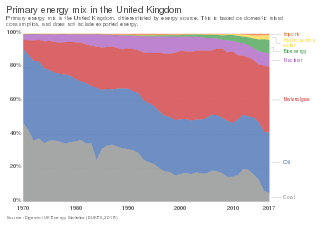
The current energy policy of the United Kingdom is the responsibility of the Department for Business, Energy and Industrial Strategy (BEIS), after the Department of Energy and Climate Change was merged with the Department for Business, Innovation and Skills in 2016. Energy markets are also regulated by the Office of Gas and Electricity Markets (Ofgem).
Ontario electricity policy refers to plans, legislation, incentives, guidelines, and policy processes put in place by the Government of the Province of Ontario, Canada, to address issues of electricity production, distribution, and consumption. Policymaking in the electricity sector involves economic, social, and environmental considerations. Ontario's electricity supply outlook is projected to deteriorate in the near future due to increasing demand, aging electricity supply infrastructure, and political commitments, particularly the phase-out of coal-fired generation. Policymakers are presented with a range of policy choices in addressing the situation, both in terms of overall system design and structure, and specific electricity generating technologies.
The electricity sector in Colombia is dominated by large hydropower generation (65%) and thermal generation (35%). Despite the country's large potential in new renewable energy technologies, this potential has been barely tapped. A 2001 law designed to promote alternative energies lacks certain key provisions to achieve this objective, such as feed-in tariffs, and has had little impact so far. Large hydropower and thermal plants dominate the current expansion plans. The construction of a transmission line with Panama, which will link Colombia with Central America, is underway.
The electricity sector in Peru has experienced impressive improvements in the past 15 years. Access to electricity has increased from 45% in 1990 to 96.4% in 2018, while service quality and efficiency of service provision improved. These improvements were made possible through privatizations following reforms initiated in 1992. At the same time, electricity tariffs have remained in line with the average for Latin America.
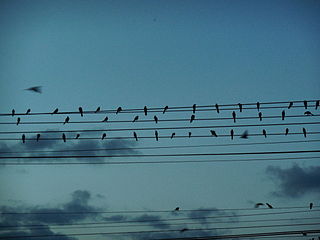
Nicaragua is the country in Central America with the lowest electricity generation, as well as the lowest percentage of population with access to electricity. The unbundling and privatization process of the 1990s did not achieve the expected objectives, resulting in very little generation capacity added to the system. This, together with its high dependence on oil for electricity generation, led to an energy crisis in 2006 from which the country has not fully recovered yet.
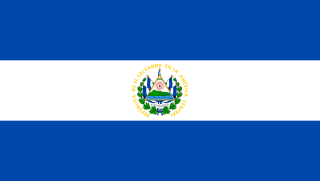
El Salvador is the largest producer of geothermal energy in Central America. Except for hydroelectric generation, which is almost totally owned and operated by the public company CEL, the rest of the generation capacity is in private hands. With demand expected to grow at a rate of 5% in the coming years, the Government's 2007 National Energy Strategy identified several hydroelectric and geothermal projects as the best option to meet demand in the future and to diversify the country's energy mix.

Despite abundant natural resources and a relatively small population, New Zealand is a net importer of energy, in the form of petroleum products. The ratio of non-renewable and renewable energy sources was fairly consistent from 1975 to 2008, with about 70 percent of primary energy supply coming from hydrocarbon fuels. This ratio decreased to about 60 percent in 2018. The proportion of non-renewable energy varies annually, depending on water flows into hydro-electricity lakes and demand for energy. In 2018, approximately 60% of primary energy was from non-renewable hydrocarbon fuels and 40% was from renewable sources. In 2007 energy consumption per capita was 120 gigajoules. Per capita energy consumption had increased 8 per cent since 1998. New Zealand uses more energy per capita than 17 of 30 OECD countries. New Zealand is one of 13 OECD countries that does not operate nuclear power stations.

The power sector in the Dominican Republic has traditionally been, and still is, a bottleneck to the country's economic growth. A prolonged electricity crisis and ineffective remedial measures have led to a vicious cycle of regular blackouts, high operating costs of the distribution companies, large losses including electricity theft through illegal connections, high retail tariffs to cover these inefficiencies, low bill collection rates, a significant fiscal burden for the government through direct and indirect subsidies, and very high costs for consumers as many of them have to rely on expensive alternative self-generated electricity. According to the World Bank, the revitalization of the Dominican economy depends greatly on a sound reform of the sector.
The electricity sector in Brazil is the largest in South America. Its capacity at the end of 2016 was 150,338 MW, a 9.500 MW increase on 2015. The installed capacity grew from 11,000 MW in 1970 with an average yearly growth of 5.8% per year. Brazil has the largest capacity for water storage in the world, being highly dependent on hydroelectricity generation capacity, which meets over 70% of its electricity demand. The national grid runs at 60 Hz and is powered 80% from renewable sources. This dependence on hydropower makes Brazil vulnerable to power supply shortages in drought years, as was demonstrated by the 2001-2002 energy crisis.
The energy policy of Malaysia is determined by the Malaysian Government, which address issues of energy production, distribution, and consumption. The Department of Electricity and Gas Supply acts as the regulator while other players in the energy sector include energy supply and service companies, research and development institutions and consumers. Government-linked companies Petronas and Tenaga Nasional Berhad are major players in Malaysia's energy sector.
The Energy Commission, abbreviated ST, was created under the Energy Commission Act 2001 as a new regulator for the energy industry in Peninsular Malaysia and Sabah. The Commission was established to ensure that the energy industry is developed in an efficient manner so that Malaysia is ready to meet the new challenges of globalisation and liberalisation, particularly in the energy supply industry.
Benin is a coastal country located in the Gulf of Guinea in Western Africa, which is a resource rich region. Energy in Benin has a diverse energy mix and takes several forms including: solar, wind, hydropower, biomass, fossil resources, and mineral resources. Out of this energy mix, about 60% of energy comes from biomass. Benin is also dependent on energy imports from Ghana and Côte d'Ivoire. While power plants and other energy facilities were built in the 1950s and 1960s, the lack of investment has led to deterioration over time. Similarly, its location in the oil-rich Gulf of Guinea has led to an attempt of oil production starting in the late 1980s. However, due to unprofitable operations, oil production halted in 1998.
Nigerian Electricity Regulatory Commission(NERC) is an independent regulatory body with authority for the regulation of the electric power industry in Nigeria. NERC was formed in 2005 under the Obasanjo administration’s economic reform agenda through the Electric Power Sector Reform Act, 2005 for formation and review of electricity tariffs, transparent policies regarding subsidies, promotion of policies that are efficient and environmentally friendly, and also including forming and enforcing of standards in the creation and use of electricity in Nigeria. NERC was instituted primarily to regulate the tariff of Power Generating companies owned or controlled by the government, and any other generating company which has a license for power generation and transmission of energy, and distribution of electricity.
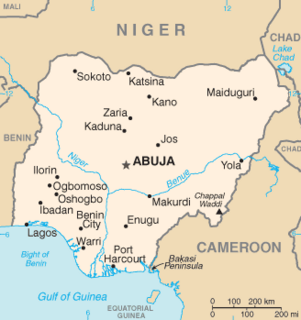
Nigeria's primary energy consumption was about 108 Mtoe in 2011. Most of the energy comes from traditional biomass and waste, which account for 83% of total primary production. The rest is from fossil fuels (16%) and hydropower (1%).
Energy use and development in Africa varies widely across the continent, with some African countries exporting energy to neighbors or the global market, while others lack even basic infrastructures or systems to acquire energy. The World Bank has declared 32 of the 48 nations on the continent to be in an energy crisis. Energy development has not kept pace with rising demand in developing regions, placing a large strain on the continent's existing resources over the first decade of the new century. From 2001 to 2005, GDP for over half of the countries in Sub Saharan Africa rose by over 4.5% annually, while generation capacity grew at a rate of 1.2%.

The Nigerian energy supply crisis refers to the ongoing failure of the Nigerian power sector to provide adequate electricity supply to domestic households and industrial producers despite a rapidly growing economy, some of the world's largest deposits of coal, oil, and gas and the country's status as Africa's largest oil producer. Currently, only 45% of Nigeria's population is connected to the energy grid whilst power supply difficulties are experienced around 85% of the time and almost nonexistent in certain regions. At best, average daily power supply is estimated at four hours, although several days can go by without any power at all. Neither power cuts nor restorations are announced, leading to calls for a load shedding schedule during the COVID-19 lockdowns to aid fair distribution and predictability.

The Ministry of Energy Infrastructures and Natural Resources of Armenia is the ministry responsible for the management of the energy systems, and control of the exploitation of natural resources in Armenia. It elaborates and implements the policies of the Republic of Armenia Government in the energy sector.
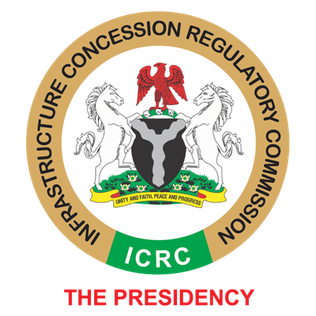
The Infrastructure Concession Regulatory Commission (ICRC) is an agency of the Federal Government of Nigeria responsible for the development and implementation of Public-Private Partnership (PPP) framework for the provision of infrastructure services.